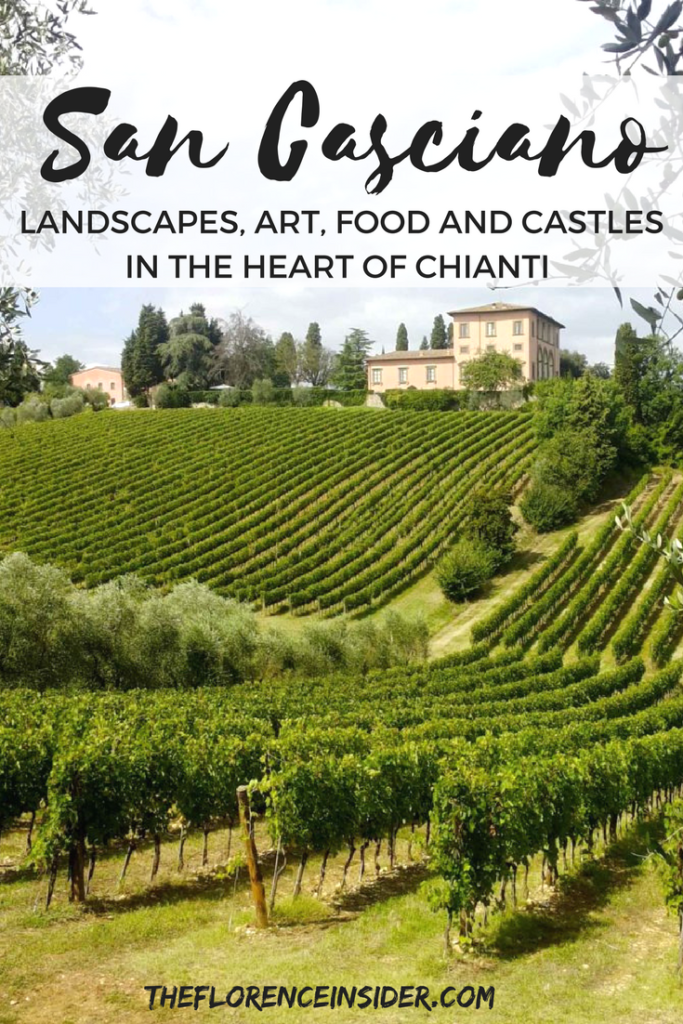San Casciano Val di Pesa. Art, history and Castles in Chianti
Of the many ancient settlements in Florentine Chianti, San Casciano Val di Pesa is certainly among my favorites. Though its name was somewhat tarnished by reports of The Monster of Florence (shadowy perpetrator/s of a series of gruesome double murders between 1968-1985) this village has a wealth of far more desirable features for which it deserves recognition: its historic origins, its excellent produce, its illustrious inhabitants, and its stash of little-known but precious works of art distributed within its territory.
Set among picturesque hills covered by olive groves and vineyards – the Chianti Classico subregion produces some of Italy’s best wines – the area is studded with characteristic little hamlets and ancient castles which often host major wine-producers.
Speaking of Chianti wine… here you can discover the traditions of Chianti wine in Florence!
What to do in San Casciano
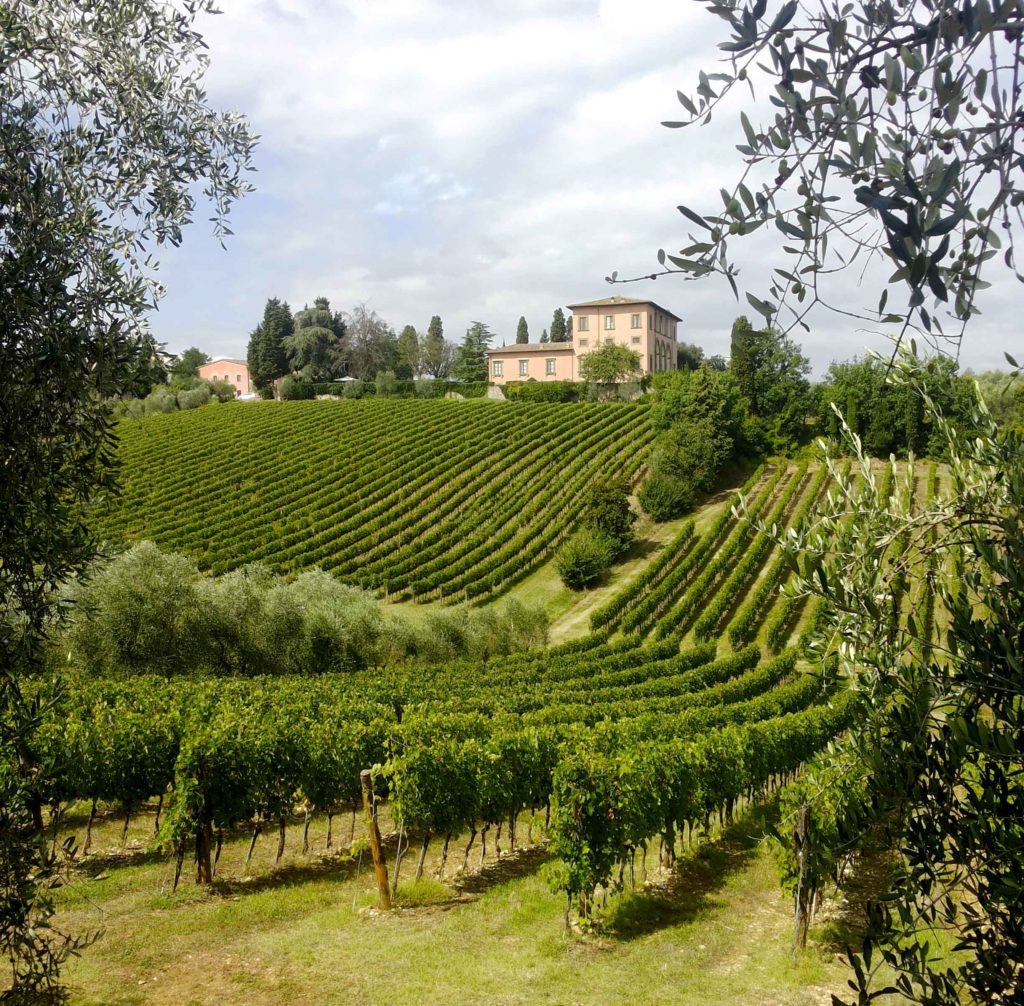
San Casciano is enclosed by its well-preserved 14th-century walls. The heart of the city is the Pierozzi square, where the clocktower rises above an arch crossing an alley. Beside the tower is an interesting stone slab dating back to the 16th Century proclaiming the right of shoppers not to be bothered by creditors on market day, with the exception of taxes owed to the Grand Duchy of Tuscany.
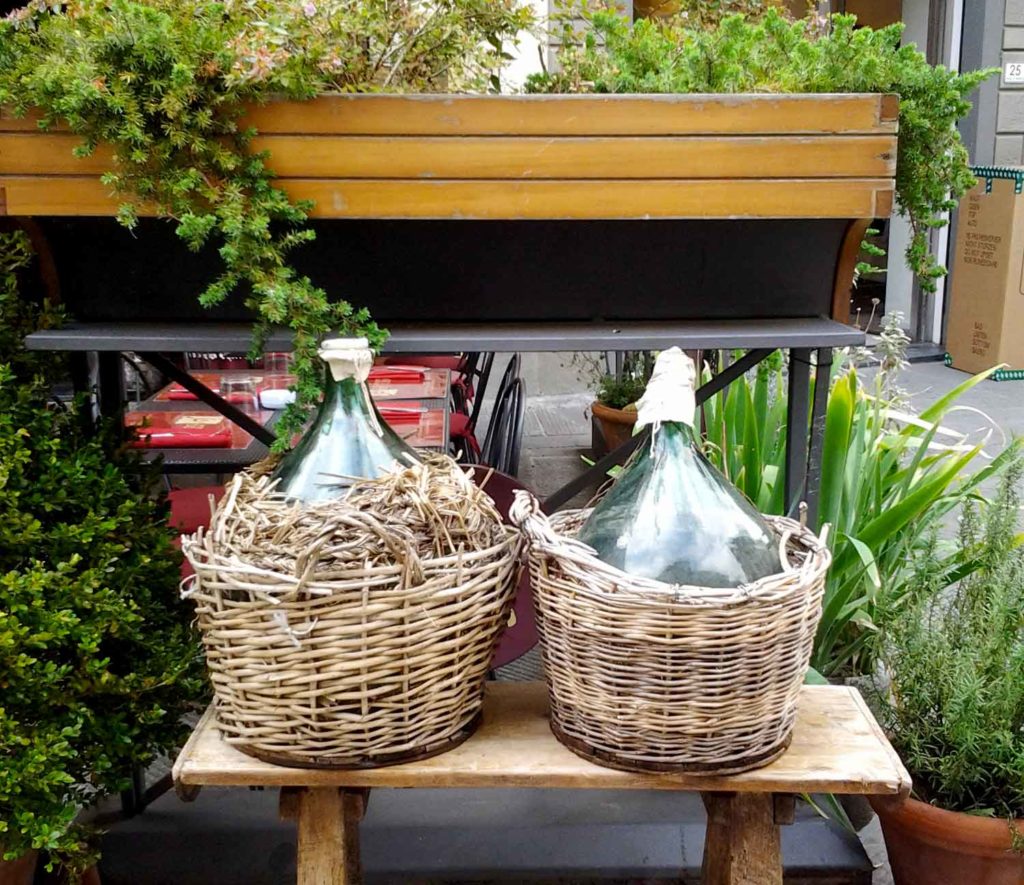
Next to the town walls, inside what was once the convent and church of Santa Maria del Gesù, you can find the Museum of San Casciano. The museum is small but among the archaeological finds on the first floor are some very significant Etruscan pieces. As for the paintings, look out for the San Michele Archangel by Coppo di Marcovaldo (one of my favorite medieval artists!) from around 1250, and Ambrogio Lorenzetti’s Madonna with Child (1319). You should also see Cabestany’s 12th-century romanesque carvings, themselves artistic masterpieces.
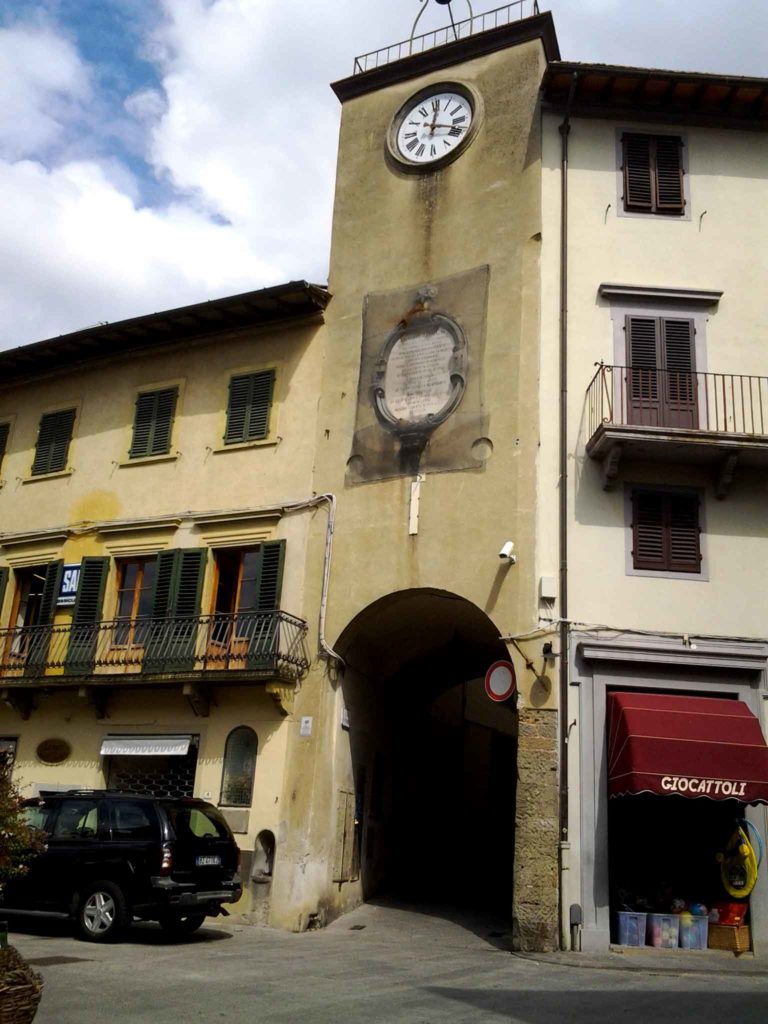
In the museum’s archaeological collection stands the Stele d’Arciere (Archer’s Stela), a 7th-century BC bas-relief monument from the tomb of an Etruscan archer in Montefiridolfi. The tomb itself lies around 500 meters from the museum and is open to visitors every day between from 9am and until one hour before sunset. Entrance to the museum costs 5 euros and for another 2 you can ascend the Torre del Chianti, a 33-meter-tall water-tower. The still retains its function as a water storage device but also features a terrace with panoramic views across Chianti.
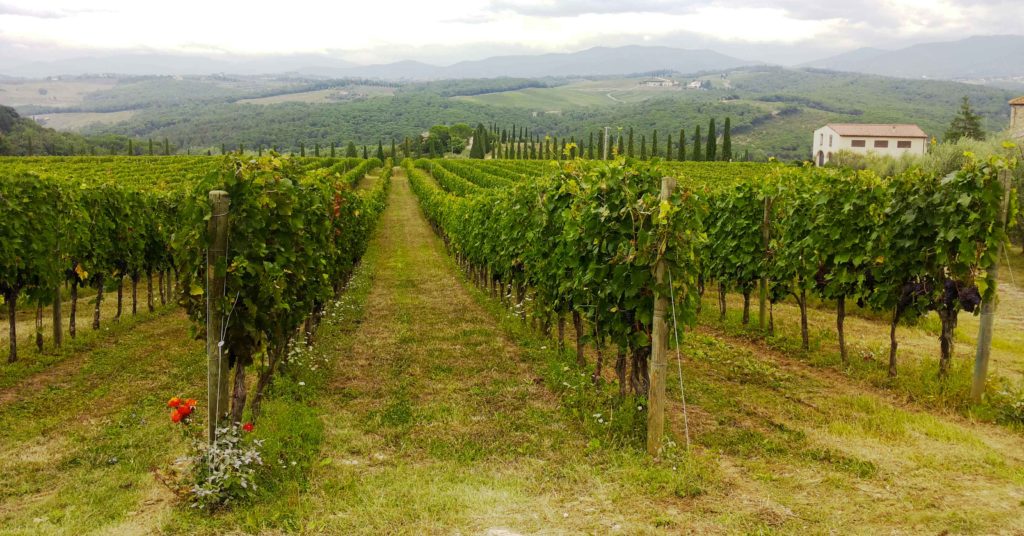
The church of Misericordia dates back to 1300 – although it has been modified several times over the centuries – and contains a number of interesting artworks for a small provincial church. The most important is Simone Martini’s depiction of the crucifixion, which is thought to have been intended for the Palazzo Publico in Siena. Look out for the gravestones on the left side of the church – they were laid in 1600 by the Otto di Guardia e Balia, the police force first of the Florentine Republic and later of the Grand Duchy of Tuscany. They forbade “every sort of game and nasty behavior”, on penalty of four Tratti di corda.
The tratti di corda (stretch of the rope) was a form of torture once widespread in Florence. The victim’s arms were bound behind his back, and his wrists were tied by a rope that would pass through a loop on the ceiling and be pulled from the ground so that the victim’s shoulders would be gradually contorted grotesquely upside-down as the arms stretched towards the ceiling behind his suffering head. Niccolò Machiavelli was consigned to tratti di corda as part of his sentence for betraying the Medicis. He was saved by the muscular physique he had developed from his years of riding, but many others died as a result of this torture.
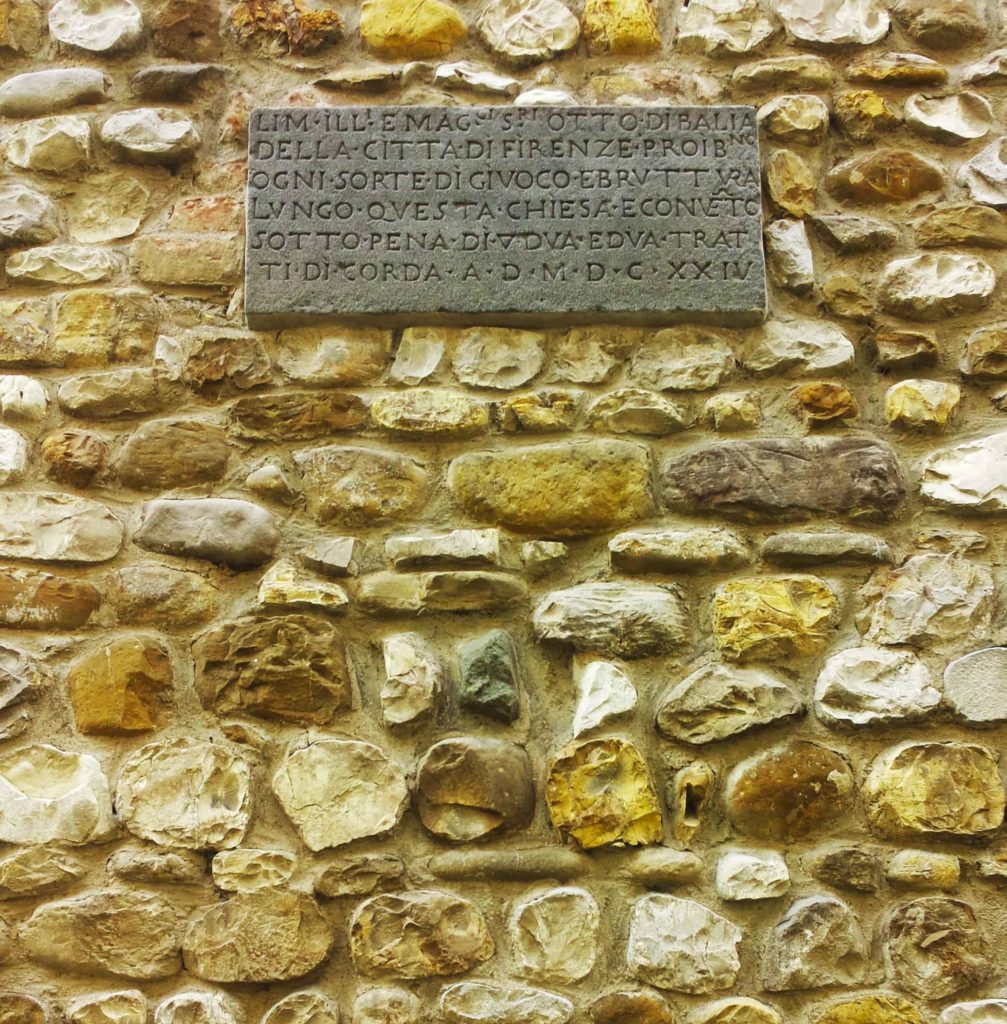
Machiavelli and the Albergaccio
While we’re on this subject, the hamlet of Sant ‘Andrea in Percussina is home to the Albergaccio – the house in which Machiavelli wrote Il Principe (The Prince), La Mandragola (The Mandrake), and most of his famous works following his being exiled from Florence by the Medici in 1512. Today, this is Casa Machiavelli, a museum where you can admire the table on which he wrote Il Principe, the kitchen where his midnight snacks were prepared, and the wonderful cellars into which Chianti Classico is still seasoned.
From the cellars you go through the secret passageway that takes you right into the kitchen of the inn on the other side of the street. This is where Machiavelli surreptitiously ate, drank, gambled, and caroused with women from the brothel that was incorporated into the tavern. The inn no longer offers all of these services, but we can nonetheless still do as Machiavelli did by eating its excellent Tuscan cuisine (I had a perfect Florentine steak here).
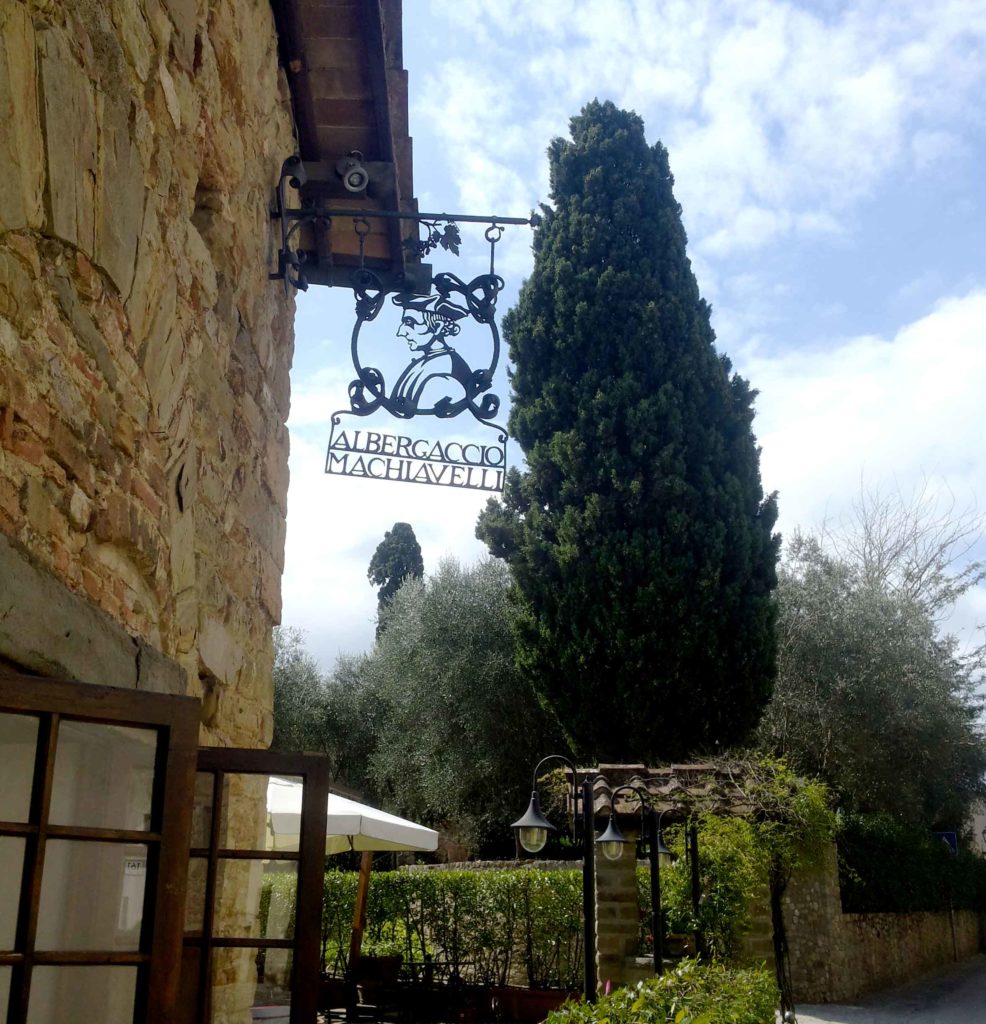
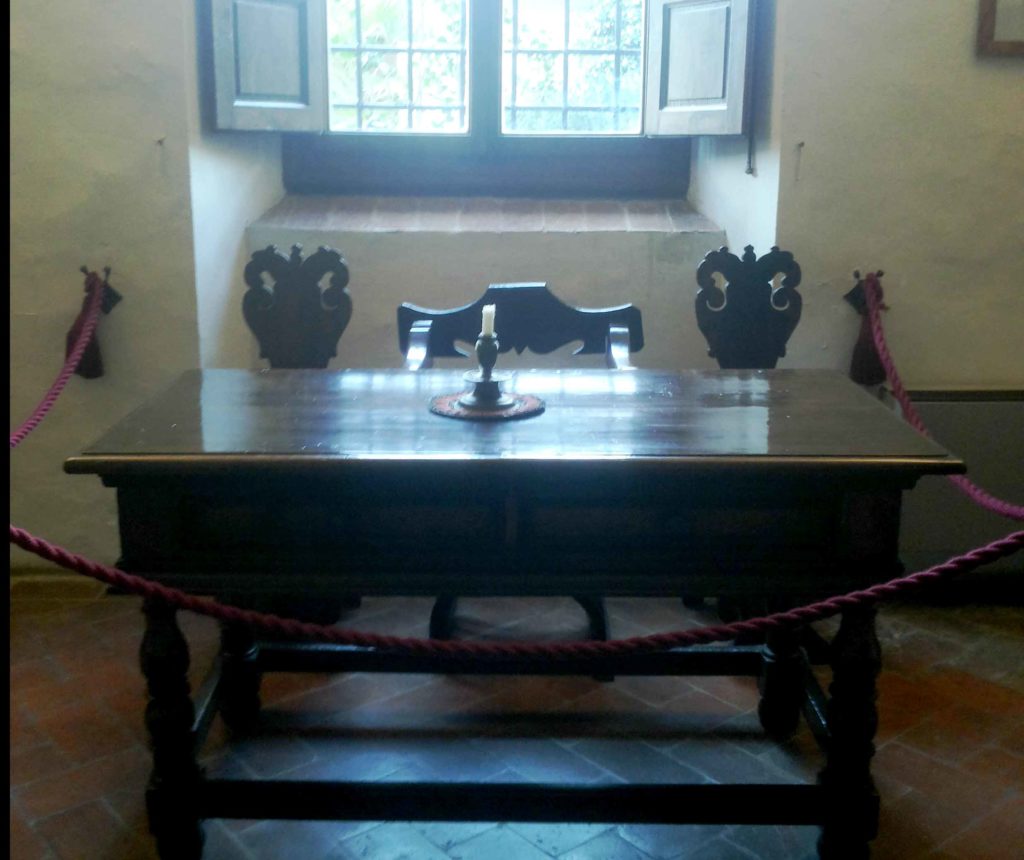
Castles and Chianti Classico
San Casciano Val di Pesa is dotted with numerous castles built for defensive purposes during the Middle Ages and often transformed into country villas and farms by wealthy Florentine families. Today, many of them house important wineries for Consorzio Vino Chianti Classico (recognizable through their distinctive black rooster logo), where visitors can sleep, eat, and of course indulge in tastings of wine and extra-virgin olive oil. Here, you can buy superb local produce direct from its source.
Among the Chianti castles which host wineries and offer accommodation I would recommend:
- Castello di Bibbione, close to Montefiridolfi
- Castello di Gabbiano, in Mercatale
Doesn’t sound bad, eh? Have you ever been to San Casciano Val di Pesa? Have I made you want to? Leave a comment and let me know!
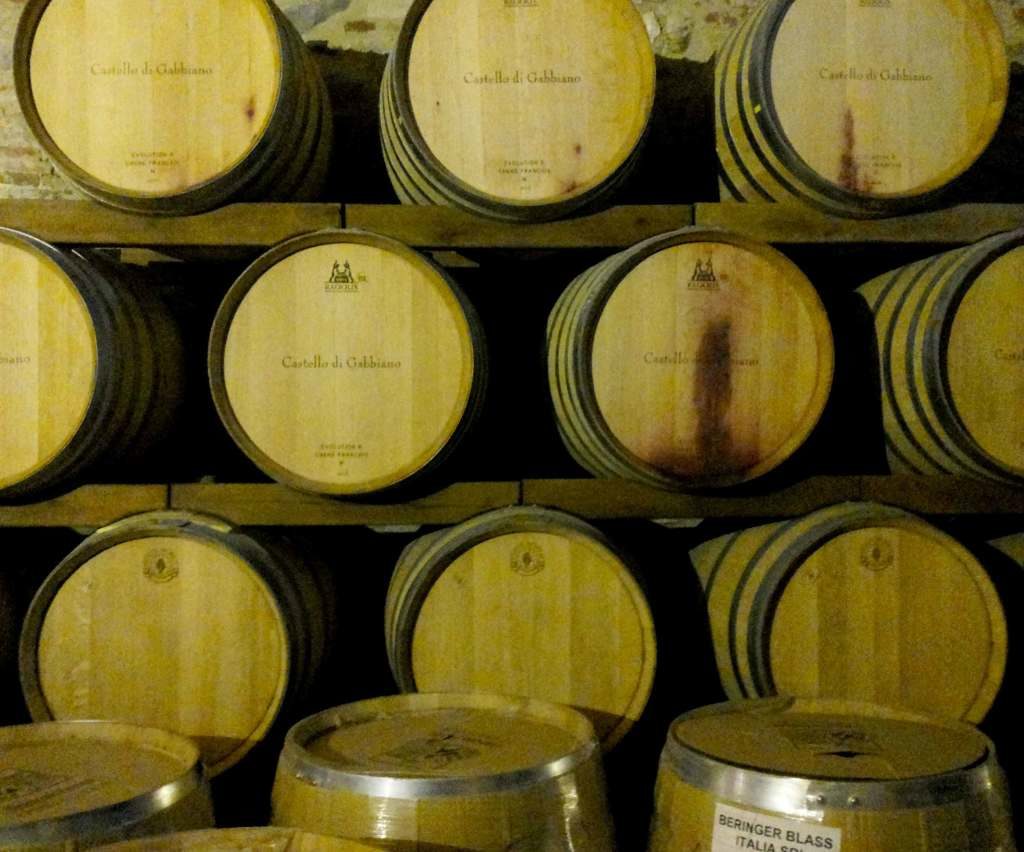
Do you need help planning your travel in Tuscany?
